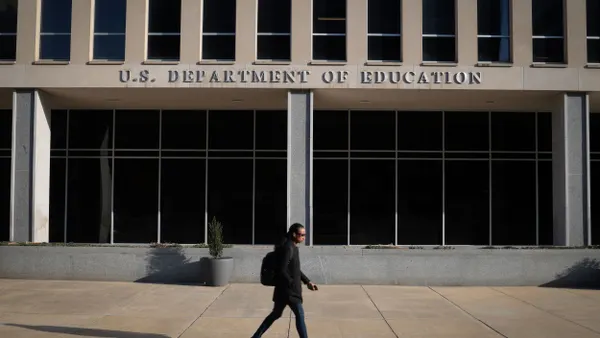Dive Brief:
- Mary Davenport, who teaches English at an international school in Brazil, writes for Edutopia that how she starts school in the fall often influences outcomes for the whole year.
- She invites students to share details about themselves with the class, has them fill out surveys about their learning styles and makes a point of asking how to correctly pronounce their names. Ahead of the first day, she also focuses on how her room set-up, including ensuring there's open space on the walls so students can imagine where their work may appear during the year.
- Davenport doesn’t even bring out the class syllabus until these and other steps, such as defining active listening, are discussed so students know they and their classmates — rather than the work — are the bigger priority.
Dive Insight:
As with any new venture, knowing the expectations of a job or a project can help create guideposts for someone to follow. For students, this means having an understanding what a class will cover, how a teacher may work, and what pupils are meant to bring to the table as well — not just a book, paper or pens.
While expectations can be helpful, they should ideally also be malleable. Each student has different needs, as does each classroom. A student’s interest in trying something new should not be bound by their worry they may run aground of an expectation — or even harm their own academic performance.
Work by Hanover Research shows that when students are told what’s expected from them at the beginning of a school year, they have a better chance of meeting these goals. “The findings concluded that teachers’ expectations have the potential to influence student achievement both directly and indirectly by affecting the amount of material that the student learns as well as their motivation to try to learn,” the researchers wrote.
Additionally, students should be shown the steps that can help them reach these outcomes, “…and their position on the trajectory to achieve them,” the researchers wrote, adding that challenges should be amended to individual students over the course of the year, as a child’s goals may need to change.
Giving students the steps on how to achieve academic goals also teaches students how to self-manage, one of the cornerstones of social and emotional learning (SEL), which educators are starting to prioritize for students’ personal growth. The foundation created by teachers, such as Davenport, can also help students build a strong relationship with their teacher from the start.











